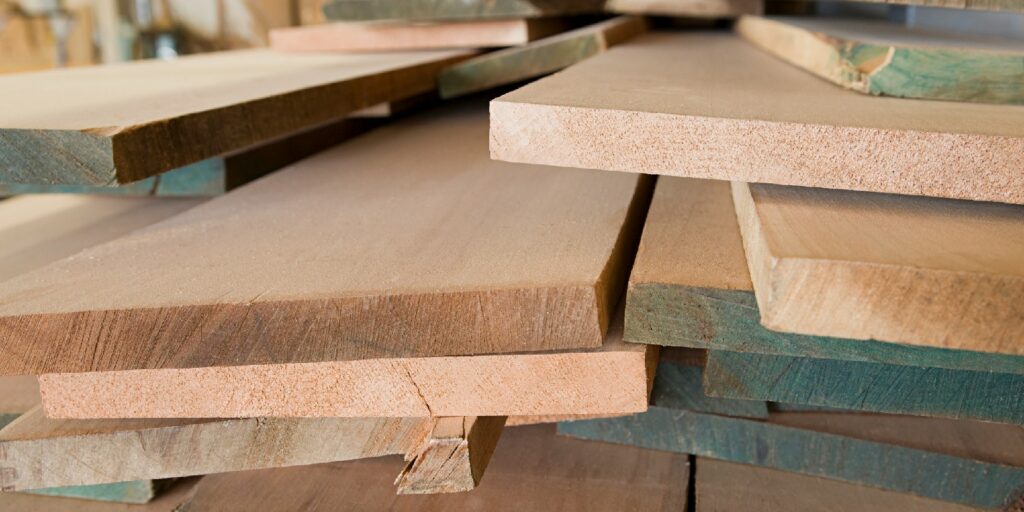5 Different Types of Wood and How To Cut Them With Precision

Whether you’re a DIY enthusiast or a professional woodworker, having the right tools and techniques can make all the difference between a successful and a disastrous project. In this post, we’ll take a look at the different types of wood that exist, how to identify them, and the most effective ways to cut every kind with precision.
From softwoods to hardwoods and everything in between, we’ll cover the essential characteristics of each one. Plus, we’ll share the best saws and cutting methods for each type of wood to make sure your next project is a success. So, if you’re ready to get started, read on for all the information you need about woodworking.
Cutting Hardwood
When ensuring precision cuts with hardwood, it’s important to use a sharp blade on your saw. Using a dull blade will create jagged edges in the wood as well as create tension that can easily cause the piece to splinter or break off. Additionally, if you plan on cutting small pieces of stock, use a miter gauge rather than a simple fence; this will help keep your stock from rolling away as you make precision cuts with your saw blade. A digital angle finder can also be used to set the angles between saw blades and fences accurately for consistent results that fit perfectly together every time you make a cut.
Cutting Softwood
Softwood is much different than hardwood when it comes to cutting precision pieces; make sure you use sharp blades with your saw whenever you plan on cutting softwood stock, as this will prevent chipping or splintering due to excessive friction from using dull blades. Depending on what size of the stock you’re working with, you may need some additional support along the edges to keep the pieces from warping — clamps secured around the edges should do the trick here. Additionally, if your project requires angled cuts, using a digital angle, finder can help ensure those measurements stay accurate as you move the saw blade around the stock for multiple angle cuts.
Cutting Engineered Wood
Engineered wood should be treated much like hardwoods when it comes time to cut them down into smaller pieces; make sure you use sharp blades whenever possible to avoid any issues with splintering or chipping while making your cuts. Also, if your stock needs slightly angled cuts — something like crown molding, perhaps — use a digital angle finder for added accuracy during each cut in order to get consistent results every time
Cutting Sheet Wood
Sheet woods tend to splinter relatively easily due to their low densities, so avoid using circular saws when cutting them down into smaller pieces; however, jigsaws can work well if you have access to ones that feature replaceable blades with sharp teeth configurations designed especially for sheet woods such as laminate floorings or thin plywood veneers. Clamps can also be used here for extra support during angled cuts on thinner sheet stock — this ensures accuracy since they can exert enough pressure not only to keep the sheet from warping or splitting but also to keep it perfectly aligned against fences or stop blocks during angled/precision cuts.
Cutting Plywood
Plywoods can be quite tricky compared to other types of woods since they vary greatly in thickness and tend to flex if not properly supported throughout the process of making angled cuts. Start by using sharp blades whenever possible in order to avoid chipping or tear-outs during each cut. Clamps should also be used here to ensure accuracy since plywoods tend to flex even with just small stresses applied against them via saw blades or fences/busters during angled cuts. Additionally, if your project requires very precise angles, such as 90 degrees, use a digital angle finder here for added accuracy when setting up stops/fences and plunging your saw blade into the plywood stock at precise angles.
Conclusion
We hope you’ve enjoyed this comprehensive look at the different types of wood, their unique characteristics, and the best technique for cutting each one with precision. Remember, it is absolutely essential to use the right tools, techniques, and wood type for any given project in order to achieve consistent success. Sharp blades, clamps, and digital angle finders are all great additions to have in your arsenal of cutting tools, and each has its own specific purpose in achieving great results. With this knowledge in hand, you’ll be ready to take on any woodworking project and cut with precision and accuracy.
